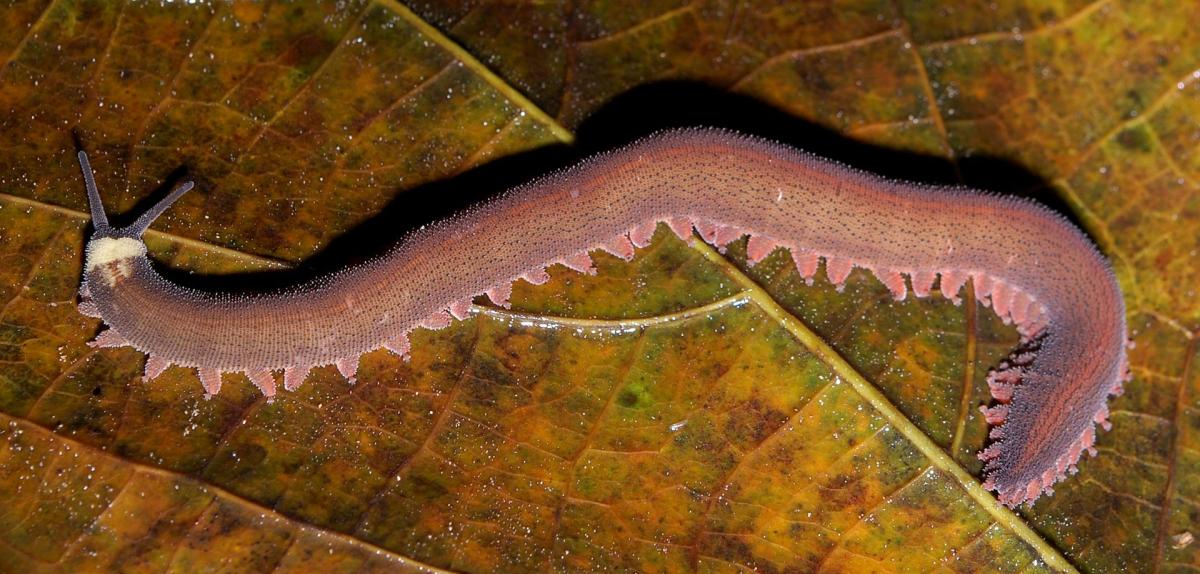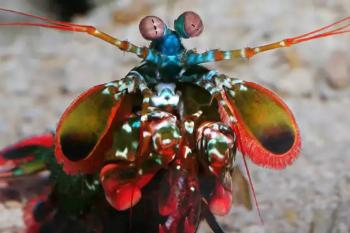Who knew scaly skin could be so silky?
Although velvet worms are called worms, they are neither the familiar Annelid nor Flatworm. In fact, they are a phylum of their own (and, no-- Shape of Life doesn’t include that phylum). Their name – Onychophora – means “claw-bearer”. Thought to be a missing link between Arthropods and Annelids, scientists now think that these ancient worms are more closely related to Arthropods.
Although velvet worms are called worms, they are neither the familiar Annelid nor Flatworm. In fact, they are a phylum of their own (and, no-- Shape of Life doesn’t include that phylum). Their name – Onychophora – means “claw-bearer”. Thought to be a missing link between Arthropods and Annelids, scientists now think that these ancient worms are more closely related to Arthropods.
Velvet worms are inhabitants of damp forests in the tropics, active at night. A very thin layer of chitin covers their body. Over this skin are rows of overlapping scales. It’s these scales that give Onychophorans their velvety appearance. They also make their skin water repelling.
The ancient velvet worms have a very unusual adaptation: slime cannons. The ancestors of velvet worms first appeared over 400 million years ago. Since that time, these worms have evolved a formidable weapon: high-speed canons that shoot slime onto their prey. They can shoot the slime as far as two feet and at high speeds, surprising and trapping their prey.
Perhaps scientists can invent a useful tool based on these remarkable slime canons? Watch a video showing a scientist trying to analyze how the worms shoot their slime.
Check this out to learn more about velvet worms.

















